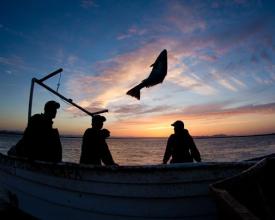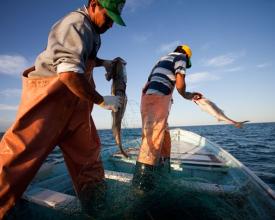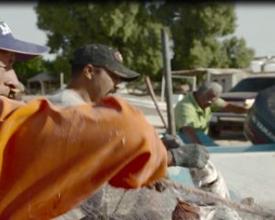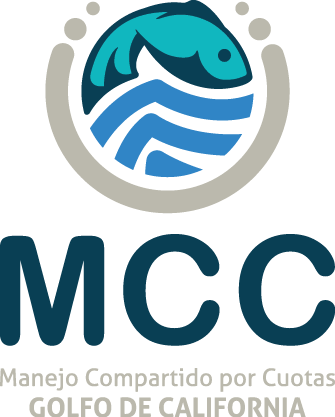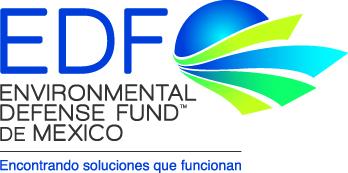
Catch Shares: A framework for sustainable fisheries
Full Solution
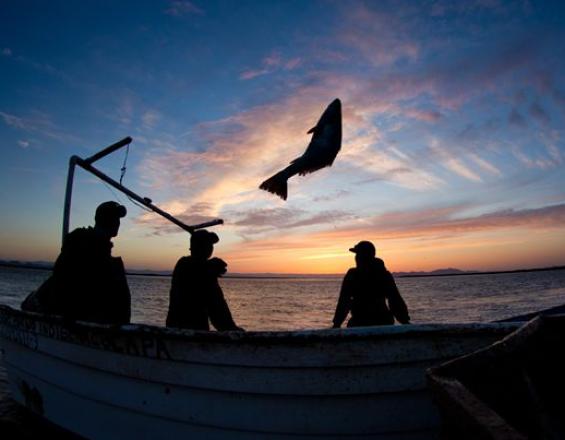
Fishing in twilight of Gulf California
Carlos Aguilera
The Upper Gulf of California is home to a variety of marine species, including the endemic Gulf corvina whose use provides a livelihood to more than 9,000 people. Unsustainable resource use has led to the overexploited of this species.
Catch Shares (MCC)is a framework for sustainable fisheries management, resulting in reduced overfishing while improving the economic wellbeing of fisherfolk dependent on healthy marine ecosystems.
Last update: 30 Sep 2020
4952 Views
Context
Challenges addressed
unsustainable and illegal fishing, threatened ecosystems and declining revenues
• A run on fish, leading to overexploitation
• Decline of fish stocks, caused by overexploitation
• Negative impacts on the ecosystems through unintentional by-catch
• Over-capitalization of fleets
• Low participation of fishermen in decision making and implementation processes
• Discrepancy between economic and conservation investments
• Illegal fishing
Location
El Golfo de Santa Clara, Mexico
Central America
North America
Process
Building Blocks
Fishing access rights
Access rights, such as individual quotas or territorial use rights (TURFS), delimited based on scientific findings and participatory processes, help to avoid overfishing and recover fish populations. They assure fishermen stable fishing over time and exclusive benefits from sustainable management, increasing their stewardship and compliance.
Enabling factors
- Support through associated legislation
- Long-time set-up for access rights
- Clearly defined norms and rules
Lesson learned
Examples on the international level show that with access rights:
- Fishermen responsibly manage their resources
- Administration and planning of fishing activities improves in the short, middle and long-term
In Mexico single examples exist in which access rights are agreed upon between fisherfolk and authorities in an unusual way:
- It is necessary to act with a clear and transparent juridical framework that has a legal framwork for access rights
Collaborative science
Accurate and updated information is crucial for resource management. Forming Technical Groups enables collaborative science for decision making. These groups consist of participants from public and academic institutions who meet regularly to share information relevant to the fishery’s management.
Enabling factors
- Access to public fishing data
- Collaboration through expert meetings
- Clear mechanisms and rules to share and use information of different sources and by different institutions
- Clear roles and responsibilities for every expert group member
- Analysis and not only dissemination of information
- Scientific information shared with decision makers
- Sharing information on fisheries with the communities to increase sense of ownership and involvement in joint monitoring
Lesson learned
- Trust between government institutions, scientists and civil society organisations is key to enable an exchange of information
- Up-to-date information on fisheries allows better decision-making regarding management activities, helps to recover or conserve species and to calculate more accurate Maximum Sustainable Yield-levels and individual allocations
- Community involvement in data collection supports the empowerment of community members and establishment of a responsible relationship with the resource
- It is important to publish the results of every investigation in which the community has been involved to create transparency as well as to motivate them to continue in joint monitoring
Participation and co-management
Fishermen, fishing and environmental authorities, scientists, buyers and NGOs participate
throughout the management process, from design to evaluation. Through multi-stakeholder meetings and Advisory Committees, a fishery’s objectives are decided, individual quotas are set and common challenges are addressed.
Enabling factors
- Physical space to enable a good and open dialogue is needed
- Civil society organizations that are well embedded and accepted in the local community help to bring all participants together and facilitate the dialogue
- Dissemination of all results
- Legal mechanisms that promote effective participation in decision making on federal level
- Inclusion of unconventional actors in the dialogue (e.g. consumers)
Lesson learned
- More participation requires more respect by all actors towards the agreements made
- To choose participating actors it is good to have a systemic focus and identify those – even if it do not seem relevant to biological aspects of fisheries – that are decisive in their activity like consumers and intermediaries
- Communities that are increasing their level of trust and knowledge on the resource they are managing generate a deeper comprehension for changes towards a sustainable fishery
- Currently there is no reference framework for the formation and operation of consulting committees, so the investment of time and resources is at the expense of the participants
- Authorities must provide formal support to the agreements made during the multi-actor meetings or in the consulting committee
- A substantial investment of time is needed – that can be a problem for some fishermen
Unconventional strategic partnerships
To promote sustainable fishing, it is necessary to create partnerships that promote behavior change, even if they are at opposite ends of the market. A partnership of fishermen and buyers brings mutual benefits such as better prices and higher quality products. This incentivises fishermen to respect catch limits and no-take zones.
Enabling factors
- Define objectives: What is to be achieved and where?
- Finding common objectives between the partners
- Identifying strengths, weaknesses, capacities and own range in a critical and realistic way
- Impartiality – Working with different actors without political or ideological distinction to reach common objectives
- Fluid and continuous communication between all stakeholders
Lesson learned
- Including different actors - some with a thus far unrecognized impact - allowed to identify focal points which triggered the first important step of the project and that gave the participants a sense for possibilities and success
- One organization cannot do everything, the sum of efforts and powers is needed to achieve solid and long-term results
- If new to a place, it helps to work with actors who are well-known in the community in order to understand values, motivations and interests of a fishery and draft common objectives
- Trust is fundamental to establish strategic alliances. Time to develop and strengthen them must be invested, especially when they are set up for the first time
- A broad network of strategic alliances diminishes the risk of the project failing. Depending on one single actor can threaten the results and long-term viability of a management system
- Alliances enable more control about actions, follow-up and evaluation in achieving the agreed objectives
Impacts
The communities manage their resources more responsibly, participate in decision-making and implement legislations
Regulated and limited fishing reduce its investment costs by 14%, increase total revenues by 8% and stops price variations of primarily 50%
Guaranteed access right to fish stocks, limits the run on fish and allows fishermen to be more selective, i.e. reducing unintentional by-catch
Catches are reduced by 40% but the prices payed increased by 22% - this improves the ratio of volume and value
Beneficiaries
small-scale and industrial fisherfolk, fishing communities, local and national fishery authorities, consumers, research institutes, civil society organisations, legislative decision makers and local communities
Story
“Chaos–that is the best way to describe the curvina fishery some years ago,” says Francisco Dominguez, a fisherman for more than 40 years in the Gulf of Santa Clara. Every year, between February and May, corvina gather in the Colorado River Delta to reproduce at the full or new moon. At this time, the sea becomes a hive of fish and boats are in a competitive race to catch them.
“Back then we used to fish just for the sake of it”, remembers Francisco. There were no incentives to decrease harvesting, regardless of the market saturation and price breakdown.
Since the implementation of Catch Shares in 2012, those days are gone. Now, fishermen like Francisco have secure access to their resources, allowing them to plan in advance, reduce costs and increase incomes while keeping the fishing harvest at sustainable levels. With Catch Shares, chaos is no longer the reality of the corvina fishery: “Now we have more fish in the water, more food on the plate and a more prosperous community.”
